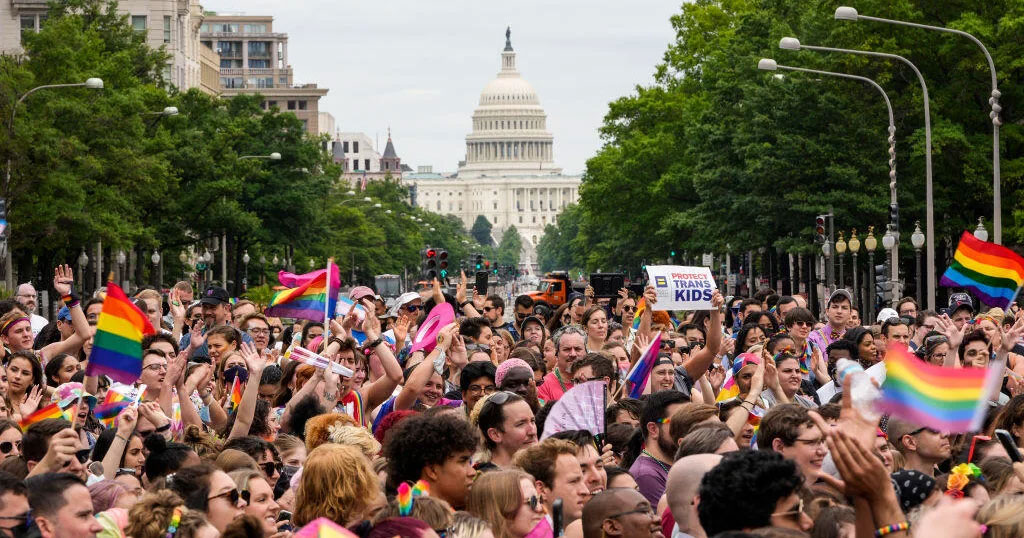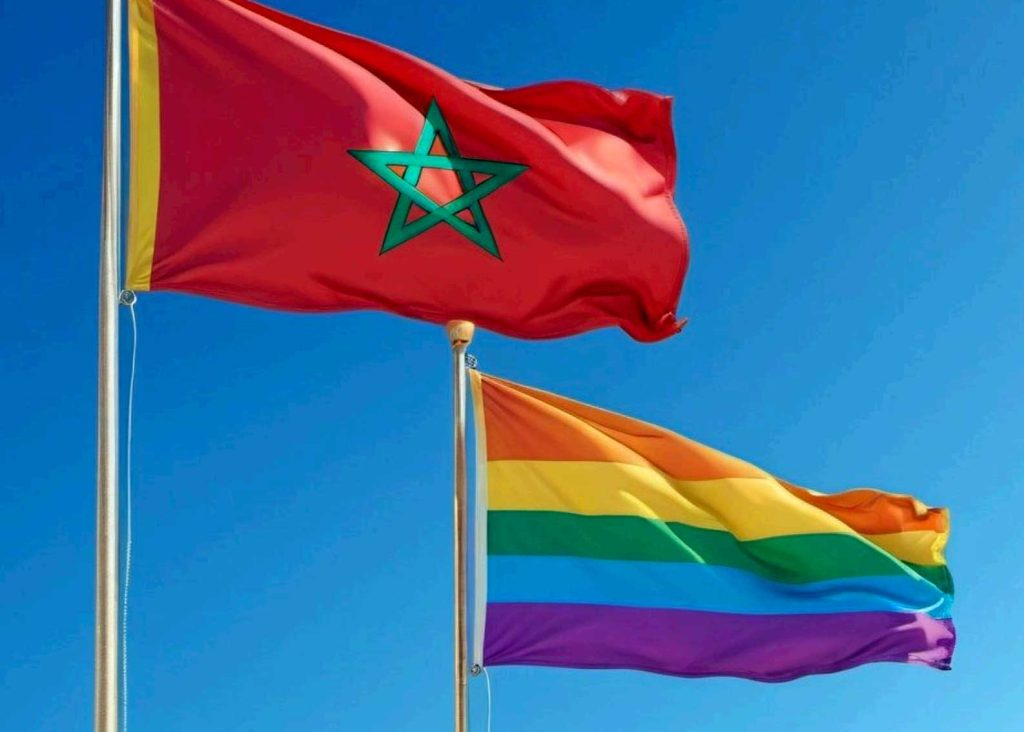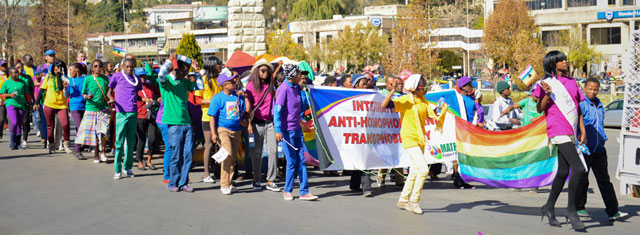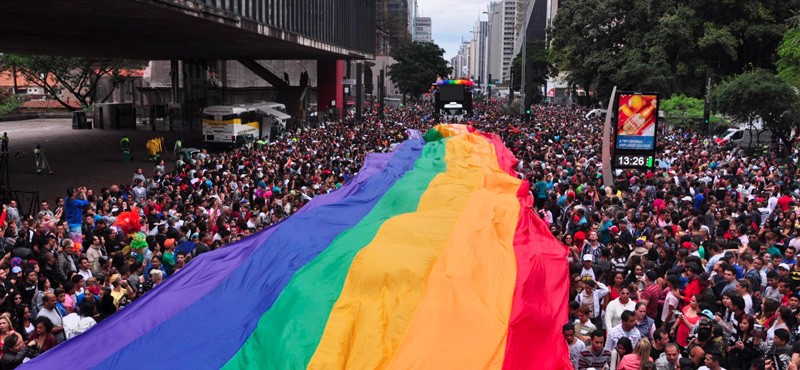Whose Pride is it, anyway?
A Global South critique of June as ‘Pride Month’

The following commentaries on the timing of Pride are published here by permission of authors Sunil Babu Pant of Nepal, the first openly gay member of Parliament in Asia, and Peter Dankmeijer of the Netherlands, executive director of the foundation that supports the Global Alliance for LGBT Education (GALE).
Whose Pride Is It, Anyway? A Global South Critique of June as ‘Pride Month’
In recent years, every June, rainbow flags rise, parades take over city streets, and institutions across the world declare their support for LGBTQIA+ rights. But beneath the celebration lies a deeper question: Whose pride are we really celebrating?
June Pride Month is often presented as a global movement. But the truth is, it is rooted in the history, climate, and calendar of the West, particularly North America and Europe. In the Global South, we are encouraged — and often funded — to adopt and mimic this Western timeline, while our own indigenous histories, festivals, climates, and traditions are overlooked, underfunded, or erased.
Stonewall and the Western Script
The origins of June Pride trace back to the Stonewall Uprising of June 1969 in New York City—an important and courageous moment in American LGBTQIA+ history. But why has one Western protest become the universal reference point for queer resistance globally?
In America and Europe, Stonewall is celebrated as a symbol of liberation. But in Asia, Africa, and Latin America, we also have long, rich histories of gender and sexual diversity—and resistance. Many of our cultures did not criminalize or stigmatize GSM/LGBTI individuals until colonial patriarchy (all colonials from the histry to the present times) imposed legal, religious, and cultural oppression. But our histories are rarely taught or celebrated beyond our borders. They are never allowed to become global.
June in the Global South: A Seasonal and Climatic Imposition
Let’s not forget that June is a summer month designed for outdoor festivities in Europe and North America. Warm weather, long days, and open skies provide the ideal conditions for parades, parties, and festivals.
But in many parts of the Global South, June is a time of extreme heat, humidity, and discomfort. In South Asia, the heat is oppressive. In the Middle East and much of Africa, it’s punishing. In Latin America, it can be unbearable. Yet we’re expected to march, dance, and protest in high heels, full makeup, heavy costumes, and layers of glitter—performing Western pride rituals under boiling skies.
What feels like freedom in New York or Berlin often feels like physical torture in Lagos, Kathmandu, Manila, or Delhi. This is not just a symbolic imposition, but a very literal, bodily one. The climate mismatch highlights how even the calendar of Pride privileges the West.
Erasing Indigenous Identities and Rituals
We’re also forced to adopt the Western acronym—LGBTQI+—at the cost of our local identities. What happens to hijra, meti, kothi, bakla, fa’afafine, muxe, ashtime, bissu, or two-spirit when everything is flattened into five or six English letters?
This language of pride, these colors of pride, this timing of pride—none of it comes from us, yet we are asked to embrace it as if it were universal.
Where are the international recognitions and funds for Gaijatra (Nepal), Hijra Habba (India), Two-Spirit Gatherings (Turtle Island), Muxe celebrations (Mexico), Fa’afafine pageants (Samoa), or Bissu rituals (Indonesia)? These are not just cultural festivals—they are queer pride traditions, often older than modern states themselves. But they are seen as “folklore” while Pride March in London is broadcast live on global television.

The Question We Must Ask: Are We Still Being Colonized?
Even in our queerness, we are still being colonized—through language, seasons, calendars, funding streams, visibility metrics, and symbols.
Why is “Pride” in June assumed to be global?
Why do we celebrate Stonewall, but not our own moments of queer resistance?
Why are we funded to fly rainbow flags, but not our traditional symbols of gender-diverse dignity?
Why are our festivals called “local” and “cultural,” but Western ones are “universal” and “political”?
This is not inclusion—it is soft imperialism. Rainbow-washing cannot hide the fact that the dominant model of Pride still centers the Western, white, urban, cisgender, male experience, and exports it to the rest of the world.
Toward Decolonized Pride
A truly global queer movement must be more than a parade. It must be:
Plural, not monolithic. Local cultures must define their own expressions of pride—on their own calendars, in their own languages, and through their own symbols.
Climate-sensitive. There is no liberation in marching under sunstroke.
Historically grounded. Our resistance did not begin at Stonewall.
Funding-just. Donors must support Indigenous and local queer traditions, not just replicate the Western model.
Pride must be a space for plurality, not just replication. The struggle for freedom is not owned by any one geography. Pride is not a parade—it is a process. And it must belong to all of us, in our own time, our own words, and our own weather.
@highlight
— Sunil Babu Pant,
Cultural Emissary for Inclusive (Pink/Rainbow/LGBT+) Tourism in Nepal;
Executive Director, Mayako Pahichan Nepal, Mayakopahichan.com
Film Maker, Meditation Guide, First openly gay member of Parliament in Asia from Nepal. Founder of Blue Diamond society, first lgbitq rights organisation in Nepal.
Former Buddhist Monk
(Spiritual name: Anaagarik Kashyap)
Rethink Pride, develop new strategies and methods
Hi Sunil,
I quite agree. The whole Stonewall story as the ‘first (global) uprising and demonstration’ is a myth anyway. Actually, the first ‘gay’ demonstrations were in Florence (1490, the ‘wild riot’ in the cathedral, then on 30 August 1512 a true parade of young men protesting against the sodomite persecution initiated by the monk Savonarola; Michael Rocke, 1996). Even when Stonewall was a significant event, much of the role of trans people was erased or belittled. But beyond that, the entire ‘uprising’ of visible ‘queers’ and the celebration of visibility of personal identities as a source of pride that Pride has become is deeply rooted in Western values – which the (gay) historian Foucault claimed to be rooted in the custom of Catholic confession (the need to ‘confess’ your sexual activities).

The protest aspect and the need to mainstream sensitive attention to sexual diversity is nowadays taken over by IDAHOT [the International Day Against Homophobia and Transphobia], although even that increasingly tends to become just another visibility day. The focus on visibility only tends to obliterate the need to change heteronormativity. As if visibility is the only way to get truly integrated and to be taken serious. Especially the situation in Western countries shows how this is not so, when governments ‘support’ visibility and symbolic policies while not really improving the situation further (pinkwashing etc.).
Still, Pride has become a very important ritual for self-validation of otherwise denied feelings and of empowerment to join emancipation struggles. I remember the first times I was part of Pride parades, the sense of relief to be able to be open in public, and to be in the company of so many others – while normally you were almost always the only one or one of a few. I think this may be a reason why many non-Western tribes have co-opted Pride. Although it may also be a cultural imperialism, in part. But I strongly believe that in a globalizing world, we should be free to adopt, take over and adapt rituals when we like them, when they empower us. Unless such take-over damages or diminishes the tribal source culture.
Especially in the South, other rituals for self-validation and empowerment could be developed. In other seasons and maybe with less emphasis on ego and personal identity. Maybe with more emphasis on a sense of belonging, of (re)linking with traditional families and villages, and on mutual support. Or/and way to include sexual / gender diversity in the types of respect that are common in many cultures (culture appropriate mainstreaming). A way forward could be to rethink this and to develop new strategies and methods.
— Peter Dankmeijer
GALE: The Global Alliance for LGBT Education
www.gale.info
Year-round festivals would expand visibility, solidarity, and maybe attract tourists
Dear Peter,
Thank you for your insightful reflections—I deeply resonate with your observations. You’re absolutely right: the Stonewall narrative, while significant in a particular context, has been disproportionately elevated as a global origin myth, often at the cost of erasing or overshadowing other equally important histories and traditions, such as those you mentioned from Florence.
I fully agree that we must respect diversity, plurality, and local realities—including our own cultural calendars, rituals, and celebratory weather. In many parts of the Global South, June is simply not conducive for outdoor visibility events due to extreme heat, monsoons, or both. What suits Western summer does not translate into a universally joyful time everywhere.
I also strongly share your view that donors and international allies must shift from prescribing formats to supporting local imagination. We must stop calling June “the global Pride month.” Let different communities create their own Pride events in ways that reflect their histories, geographies, spiritual practices, and languages.
Having Pride celebrations and festivals year-round, rather than just in June, would not only decentralize the movement—it would also expand visibility, solidarity, and potentially even queer-friendly tourism. There’s no reason why Gaijatra in Nepal, Muxe celebrations in Mexico, or fa’afafine pageants in Samoa shouldn’t have the same global recognition as Pride parades in New York or Berlin.
As you said beautifully, the path forward lies in rethinking and reshaping rituals of belonging, not just identity. Let us encourage that shift—honoring both legacy and innovation.
Having said that, very happy “pride month of Global North”.
— Sunil Babu Pant
Many more responses can be found on Sunil Pant’s Facebook page, starting with this one:
Pride is more diverse, complex and locally relevant than you suggest
Your argument raises valid and important critiques about the Western-centric framing of global Pride celebrations, especially around issues of climate, funding, cultural recognition, and symbolic dominance. However, it also flattens the reality of Pride movements in the West and globally by presenting them as monolithic, white, and imperialistic, overlooking the deep diversity, intersectionality, and grass-roots nature of Pride both within and outside the so-called “West.”
A nuanced counterpoint may recognise both the limitations and the plurality of Pride, including how it’s increasingly decentralised and intersectional.
Pride in North America and Europe is not led solely by cis white men. While it’s true that early mainstream LGBTQ+ visibility in the West was disproportionately white, cis, and male, this is no longer representative of Pride as a whole. Pride events in Western cities today are not hegemonically led by that demographic. In fact, Stonewall itself was catalysed by queer and trans people of colour, including Marsha P. Johnson, a Black trans woman, and Sylvia Rivera, a Latina trans activist. Their contributions are central to modern Pride narratives, especially in urban centres.
Many major cities have Black, Indigenous, and People of Colour (BIPOC) Pride events, such as UK Black Pride, Toronto’s Blockorama, Trans Pride Brighton, and San Francisco’s Trans March, centring on queer people who are not white, not cis, and not male.
Pride has evolved into a platform for intersectional issues: immigration rights, racial justice (e.g. the fusion of Black Lives Matter and Pride), disability inclusion, trans rights, and Indigenous sovereignty.
Rather than being a monolithic expression, Pride in the West is fragmented and reflective of complex identities and histories.
Pride is not just about a parade, but a broader cultural and political movement. Parades may be the most visible form of Pride, but they are far from the whole story. Teach-ins, community fairs, health clinics, film festivals, art exhibitions, protests, and healing circles often accompany Pride Month activities. For example, in New York City, the Reclaim Pride Coalition organises a Queer Liberation March focused on grass-roots activism and free from corporate sponsorship.
Organisations like The Audre Lorde Project, The Okra Project, House of Tulip, and Black Trans Femmes in the Arts host Pride-adjacent events centring on survival, care, and resistance – often with no parade in sight.
Pride is also used as a time for activist organising, especially around trans rights, conversion therapy bans, and police accountability.

The biggest Pride events are not in the Global North and the claim of Western universalism needs to be challenged. São Paulo, Brazil holds the world’s largest Pride parade, drawing 3 – 5 million attendees each year. Its themes often emphasise anti-racism, trans rights, and political resistance to anti-LGBTQ+ legislation.
Taipei Pride is the largest in East Asia, attracting hundreds of thousands annually and incorporating Taiwanese cultural elements and histories.
Johannesburg Pride, Manila Pride, Mumbai Queer Azaadi March, and Cape Town Pride are prominent, home-grown, and adapted to local conditions – not simply imitations of Western events.
These Pride celebrations occur with unique symbols, local languages, and adapted schedules, proving that Pride has already diversified far beyond the “June framework” in many places.
It’s incorrect to say that indigenous and culturally specific identities are being erased by LGBTQIA+ frameworks. Many Pride events now explicitly honour Two-Spirit, hijra, bakla, and fa’afafine identities. For example, Canada’s Pride events often include Two-Spirit ceremonies, land acknowledgments, and Indigenous performances. Hijra Habba in India receives increasing international attention and funding from both local governments and global NGOs. Fa’afafine Week in Samoa is led by local queer communities and rooted in Indigenous gender understandings, not Western frameworks. Mexico’s Muxe celebrations have been internationally recognised and embraced as part of broader LGBTQIA+ solidarity.
While much more recognition and funding is still needed, Pride is already being indigenised and localised in many places.
The claim that Pride represents soft imperialism ignores the ongoing decolonial work within the LGBTQIA+ movement itself. For example, Pride organizations in the Global North are increasingly redirecting funds to grass-roots activists in the Global South. There is greater recognition of anti-colonial and anti-capitalist Pride narratives – e.g. the No Pride Without Justice campaigns.
Pride is evolving (and returning) from “celebration” to “protest” in many contexts, especially in countries experiencing political repression, such as Uganda, Poland, Hungary and Turkey, where Pride becomes an act of defiance.
Your idea that June is universally imposed is simply overstated. While June is a symbolic month in North America and Europe, many countries and regions celebrate Pride on alternative calendars.
Sydney Mardi Gras (Australia) occurs in February, aligned with the Southern Hemisphere summer.
Tokyo Rainbow Pride happens in April to suit Japan’s climate and cultural calendar.
Cape Town Pride takes place in February-March, again reflecting seasonal needs.
This flexibility shows that communities already adjust Pride timelines to match local realities, resisting any supposed Western imposition.
Furthermore, June is Winter and a great time to celebrate Pride in some parts of the Southern Hemisphere, from a weather perspective. For example, in São Paulo the average high temperature in June is 24C, average low is 14C. With six hours of sunshine and relatively low rainfall, the weather is mild and ideal.
In conclusion, Pride is both global and local. Rather than viewing global Pride as colonial imposition, it can be seen as a network of local and regional movements that sometimes share symbols (like rainbow flags) but increasingly assert their own identities, calendars, and forms of resistance. Pride is not a singular export from the West – it is a living, evolving, decentralised practice shaped by countless local struggles and triumphs.
Critique is necessary and valuable – but it should also recognise the agency and creativity of Global South activists who are not passive recipients of Western models, but architects of their own queer futures.
— Jan Althus




